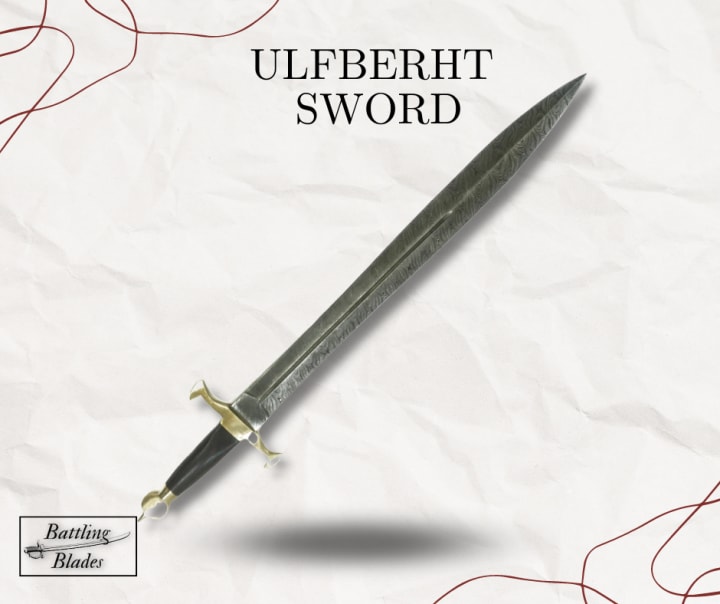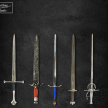
Step into the past and immerse yourself in the world of the Vikings, a bold and seafaring people who dominated vast territories in Europe and beyond from the ninth to the eleventh centuries. Among their formidable arsenal, the Viking swords, including the renowned Ulfberht sword blades, stand as relics that illuminate the might and prowess of history's most feared invading forces. Join us on a captivating journey as we delve into the fascinating tale of Viking swords, exploring their intricate craftsmanship and the elements that set them apart as truly extraordinary weapons.
Distinctive Features of Viking Swords:
Metal and Construction:
Viking swords were more than just weapons; they were exquisite works of art. Craftsmen employed a remarkable technique, carefully welding multiple pieces of metal together to create intricate patterns. The process involved the meticulous twisting and hammering of iron bars to form a solid core, later honed to create a sharp cutting edge. These skilled swordsmiths combined various metals, achieving a perfect balance of flexibility and hardness, resulting in blades of exceptional quality. As time passed, this pattern-welding technique declined, giving way to swords crafted from single pieces of metal.
Ulfberht Swords and Crucible Steel:

The Vikings were renowned for their use of high-quality crucible steel Ulfberht swords, believed to have origins in Central Asia. Initially known as wootz steel, these blades, later referred to as Damascus steel, boasted extraordinary hardness and displayed mesmerizing watered patterns. While modern replicas mainly utilize blades made of high carbon steel, the allure of the ancient Ulfberht swords continues to enchant collectors.
Blade Appearance:
Viking swords typically featured straight, double-edged blades with rounded tips, reflecting their preference for slashing strikes. However, later designs became slimmer and more pointed. Some blades showcased fullers (grooves) to reduce weight. The pattern-welded blades displayed intricate designs, such as herringbone or star and wave patterns, adding an aesthetic touch to these formidable weapons.
Specifications: Size and Weight:
A typical Viking sword measured between 90 and 95 centimeters in length, with variations ranging from 70 to 90 centimeters. The width was around 5 to 6 centimeters. Combat-oriented swords had their mass concentrated near the blade's tip. Later designs featured tapered blades, weighing over 1 kg.
Sword Mounting and Hilt:
Viking sword hilts ranged from 12 to 18 centimeters in length, enabling effective two-handed use, especially when combined with shields. These hilts were not only practical but also ornate, adorned with materials such as iron, bone, walrus ivory, and antler. Ceremonial swords of Viking chieftains were particularly impressive, featuring copper with inlaid geometric designs in silver and brass, as well as distinctive straight guards and lobed pommels.
Scabbard:
To protect these exceptional blades, scabbards were meticulously crafted. Comprising layers of lining, wood, inner coverings, and outer materials, the scabbard's construction showcased remarkable craftsmanship. Cloth or sheepskin lined the sheath to cushion the blade, while multiple layers of wood, leather, and fabric formed the outer shell. Metal chapes shielded the scabbard's ends, adding both durability and elegance. Crafting a scabbard often rivaled the cost of making the sword itself.
In Conclusion:
Viking swords endure as symbols of dueling and the relentless pursuit of new lands. Some were immortalized in Icelandic sagas, acquiring names and legendary powers through inscriptions. The legacy of Viking swords lives on through modern martial arts, reenactments, and their iconic presence in Hollywood movies. As we cherish and learn from these artifacts, we pay homage to the indomitable spirit of the Viking warriors who once wielded them.
About the Creator
Owen J
Fascinating realm of medieval weapons from various regions, chronicling my quest to uncover their historical significance. I have made intriguing discoveries and encountered remarkable individuals who have regaled me with captivating tales.






Comments
There are no comments for this story
Be the first to respond and start the conversation.